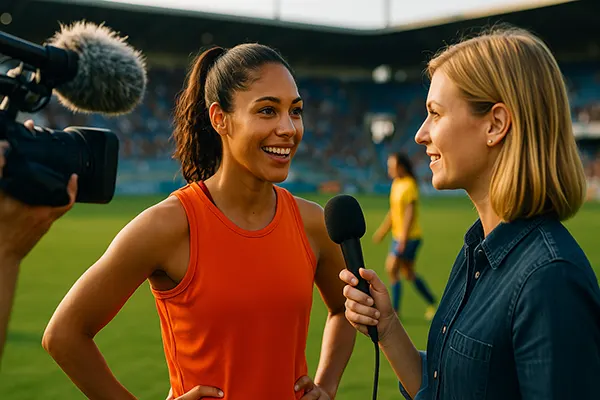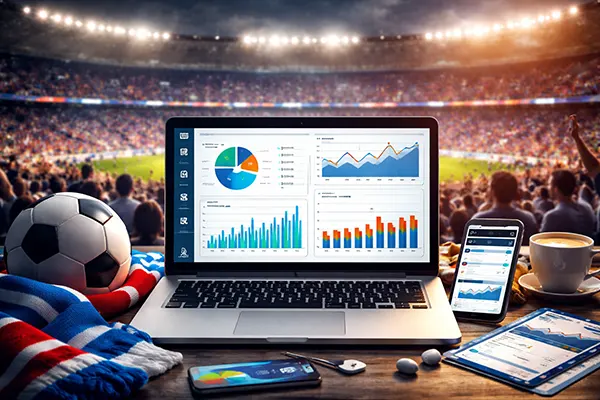
Marketing in Women’s Sports: New Challenges and Brand Opportunities in 2025
The landscape of women’s sports is undergoing a transformation that is impossible to ignore. With a global push for gender equity, improved media coverage, and more inclusive sponsorship strategies, 2025 presents a critical juncture for brands aiming to position themselves as forward-thinking and socially responsible. Marketing within women’s sports is no longer a niche strategy — it’s becoming a core component of modern brand narratives.
Rising Visibility and Investment in Women’s Sports
In recent years, women’s sports have attracted significantly more media coverage and funding. From record-breaking attendances at UEFA Women’s EURO and the WNBA’s new broadcast deals to historic investments in cricket and rugby, the commercial ecosystem is maturing fast. These developments provide brands with new avenues to reach engaged audiences in diverse markets.
As of mid-2025, leading federations and leagues have reported double-digit revenue growth from women’s competitions. Brands like Nike, Visa, and Google continue to pioneer long-term partnerships with female athletes and teams. This kind of visibility reinforces not only social credibility but also market relevance, particularly among Gen Z and Millennial consumers who value authenticity and equity.
Importantly, this visibility translates into ROI. Nielsen reports indicate a growing crossover between women’s sports audiences and brand loyalty, with female sports fans showing a high intent to support companies that invest in their favourite teams or athletes.
Strategic Sponsorships That Deliver Value
Brands are increasingly moving away from transactional sponsorships in favour of deeper collaborations with athletes, clubs, and governing bodies. This means activating partnerships through storytelling, community engagement, and integrated campaigns that celebrate female athleticism and leadership.
For example, Adidas’ partnership with the Women’s Champions League includes school programmes, grassroots initiatives, and co-branded merchandise, extending the reach beyond matchday. Meanwhile, local brands are leveraging regional athletes to build trust and resonance within specific demographics.
The effectiveness of these sponsorships hinges on cultural intelligence and commitment. Superficial branding efforts are often met with scepticism. In contrast, initiatives that align with broader social values — such as mental health awareness, sustainability, or LGBTQ+ inclusion — drive higher engagement rates and long-term brand affinity.
Digital Campaigns and Influencer-Led Growth
Social media remains a vital tool for elevating women’s sports. Athletes like Alexia Putellas, Iga Świątek, and Simone Biles have built personal brands that outpace many male counterparts in engagement and trust. For marketers, this opens doors to influencer-led campaigns that blur the line between sport and lifestyle.
By mid-2025, TikTok and Instagram remain the top channels for content discovery, especially among younger demographics. Brands that integrate female athletes into storytelling that feels personal and empowering tend to achieve higher CTRs and conversion metrics.
Influencer-led campaigns in women’s sports don’t have to rely on star athletes alone. Coaches, sports journalists, and even superfans with authentic followings can amplify messaging in a grassroots manner, especially during major events like the Women’s World Cup or Olympic qualifiers.
Technology and Data-Driven Insights
Marketers now have access to granular performance data from women’s leagues, helping refine segmentation strategies and target activations more precisely. Advanced analytics also allow brands to benchmark ROI on partnerships and test engagement hypotheses before scaling campaigns.
Wearable tech and sports science are being integrated into content marketing as well. For example, brands sponsoring performance gear are producing behind-the-scenes training insights, engaging fans with data visualisation and recovery narratives that humanise athletes.
Crucially, the use of AI and machine learning enables more inclusive storytelling. Campaigns can be localised and adapted in real time, enhancing resonance across different markets while maintaining the integrity of the core message.

Challenges and Ethical Considerations in 2025
While progress has been significant, structural inequalities remain. Pay disparities, inconsistent broadcasting deals, and outdated sponsorship models still plague many women’s sports. Brands that ignore these realities risk appearing performative or opportunistic.
Marketers must also consider how they portray female athletes. The overemphasis on appearance or femininity can undermine athletic achievements and alienate progressive audiences. Representation matters, and portraying athletes as leaders, strategists, and role models is crucial in modern storytelling.
Ethical marketing requires alignment between brand values and real-world actions. Consumers are increasingly aware of “sportswashing” and demand transparency in sponsorship practices. Long-term support, especially at the grassroots level, often signals genuine commitment over publicity stunts.
The Future of Equitable Sports Marketing
Looking ahead, brands that embed equity into their business models will be better positioned to thrive. The shift is already visible in C-suite roles where more women are influencing sponsorship decisions, and in procurement guidelines requiring ethical collaboration with underrepresented groups.
Educational institutions, media companies, and even tech firms are now forming alliances with women’s sports leagues to shape the next generation of fans and athletes. These cross-sector collaborations present opportunities to create inclusive ecosystems beyond the field of play.
Ultimately, 2025 is not just another year for incremental change. It’s a defining moment for brands to align with movements that matter, and women’s sport is undeniably one of them.
Last posts
-
 How Sports Clubs Use First-Party and Zero-...
How Sports Clubs Use First-Party and Zero-...
The gradual removal of third-party cookies has forced …
-
 Marketing Strategies for Women’s Spo...
Marketing Strategies for Women’s Spo...
Women’s sport has entered a new phase of …
-
 Comprehensive Approach to Creating a Right...
Comprehensive Approach to Creating a Right...
In the dynamic landscape of modern sports marketing, …
